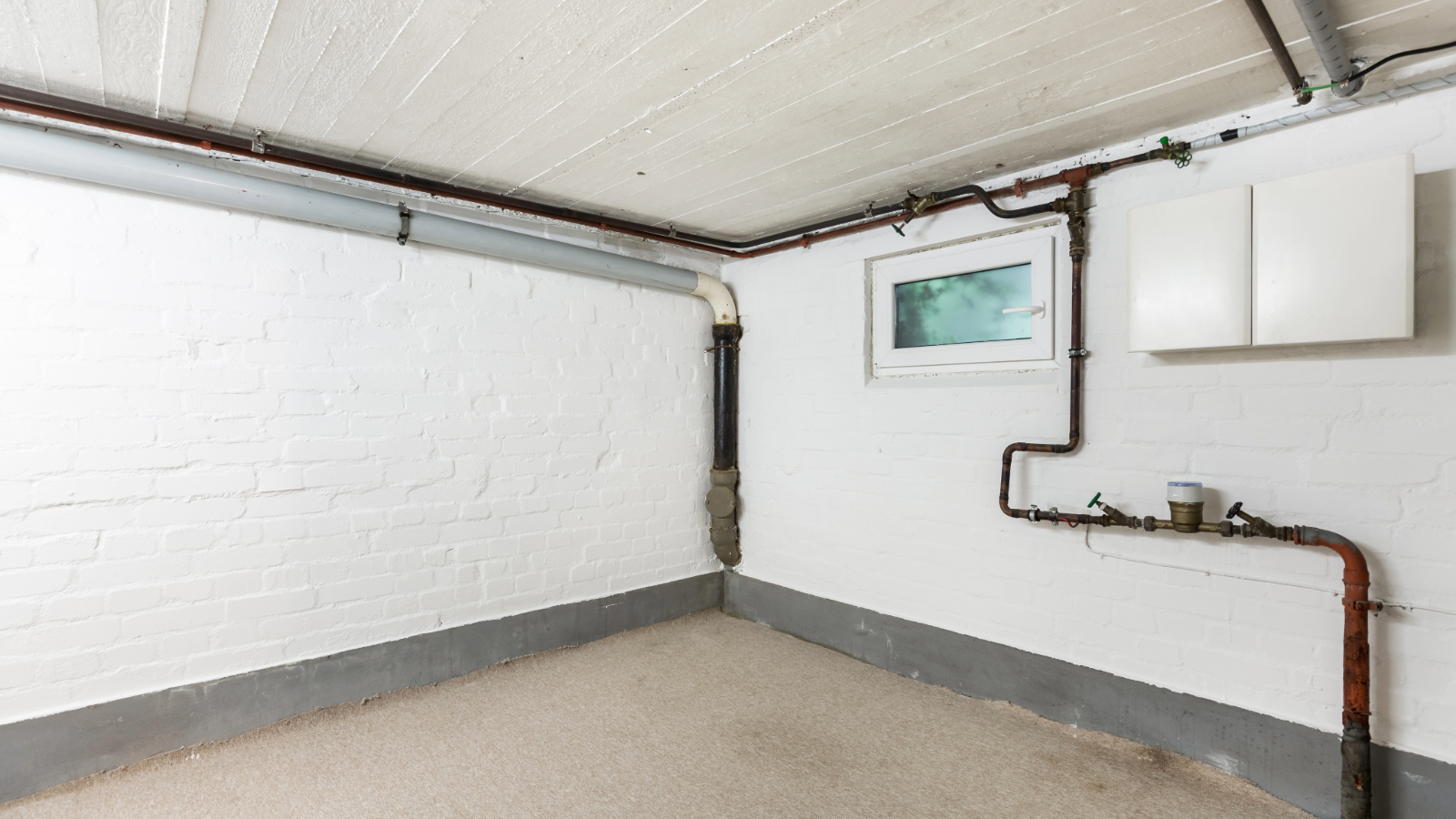What are power flushing costs today? Find out how much you can expect to pay
Find out more about power flushing costs so you can budget for giving your central heating system a deep clean
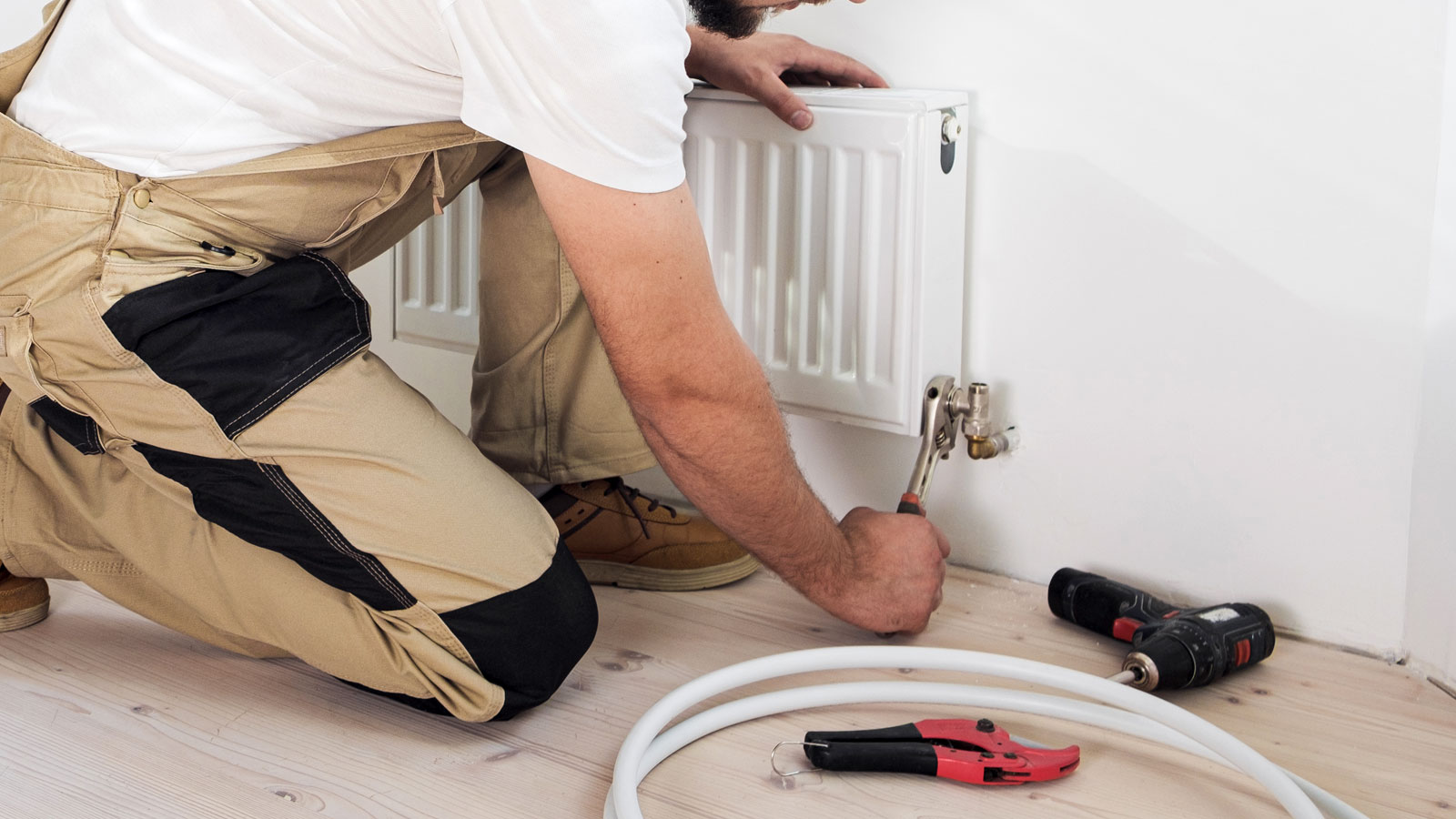
Keeping your central heating system clean is essential to ensure it runs efficiently. Bleeding radiators and an annual service are two regular maintenance tasks that will help. However, over time, rust, sludge, and residue will accumulate throughout the system, and eventually, they will need to be addressed.
This is where power flushing steps in. It will pump clean water through the pipes and radiators, pushing out any sludge and debris, leaving you with a clean and efficient central heating system.
In this guide, we look at how much you can expect to pay for all sizes of home, the tell-tale signs that you need a power flush, and what extras you can get that will help keep your heating system clean.
Tell-tale signs that you need a power flush
It's not always easy to know if you need a power flush, but there are a few signs to look out for.
Matthew Jenkins, heating and plumbing expert for MyJobQuote, points out a few of the more common tell-tale signs.
“If you notice cold spots at the bottom of your radiators or find they’re not heating up properly after you’ve bled them, then that’s a good indication your system is suffering from a buildup of sludge.
“You may also notice that rooms aren’t warming up properly when the heating’s on," he adds, "and that the boiler and radiators are noisier than they should be.”
Bring your dream home to life with expert advice, how to guides and design inspiration. Sign up for our newsletter and get two free tickets to a Homebuilding & Renovating Show near you.

Matthew Jenkins has worked as a self-employed tradesman in the domestic heating industry for over fifteen years. Matthew is a gas safe engineer specialising in heating and plumbing. He also works closely with MyJobQuote to provide expert knowledge to homeowners and tradespeople and has been featured in a range of established news outlets.
How much does power flushing cost?
The cost of a power flush will depend on the size of the home and the number of radiators. But, Gordon Chalk and Alan Houghton, managing directors at Next Level Underfloor Heating and Screed Solutions state, "the number of radiators will usually determine the final cost more than the type of property but there are a few exceptions."
Obviously the more radiators, the more flushing is needed, meaning a higher price.
“Flats are usually cheaper," confirm Gordon and Alan, "as they have fewer radiators and are more compact, However other factors like system complexity and accessibility can also affect the price.”
So what are typical power flushing costs for different size homes and number of radiators? Gordon and Alan state you can expect to pay as follows:
- Two bed house: £300-£400 (6-8 radiators)
- Three bed house: £400-£550 (8-10 radiators)
- Four bed house: £550-£700+ (10+ radiators)
Shop radiator care products and replacements
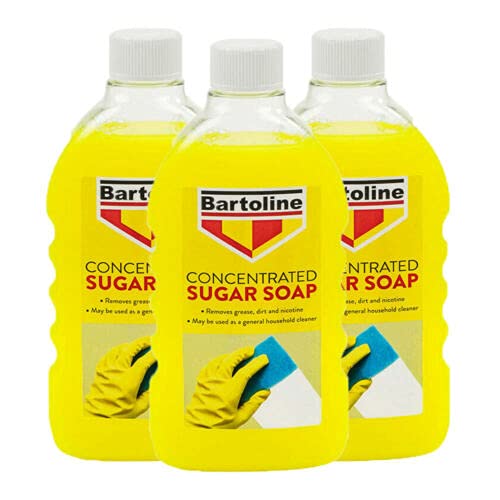
To keep your radiators clean and like new, you can use a sugar soap solution. Mix this concentrate with water to create your preferred strength, and then apply it with a sponge.

To keep your radiators looking fresh, consider adding a new coat of paint. This pack of six cans will provide a hard-wearing and heat-resistant finish.
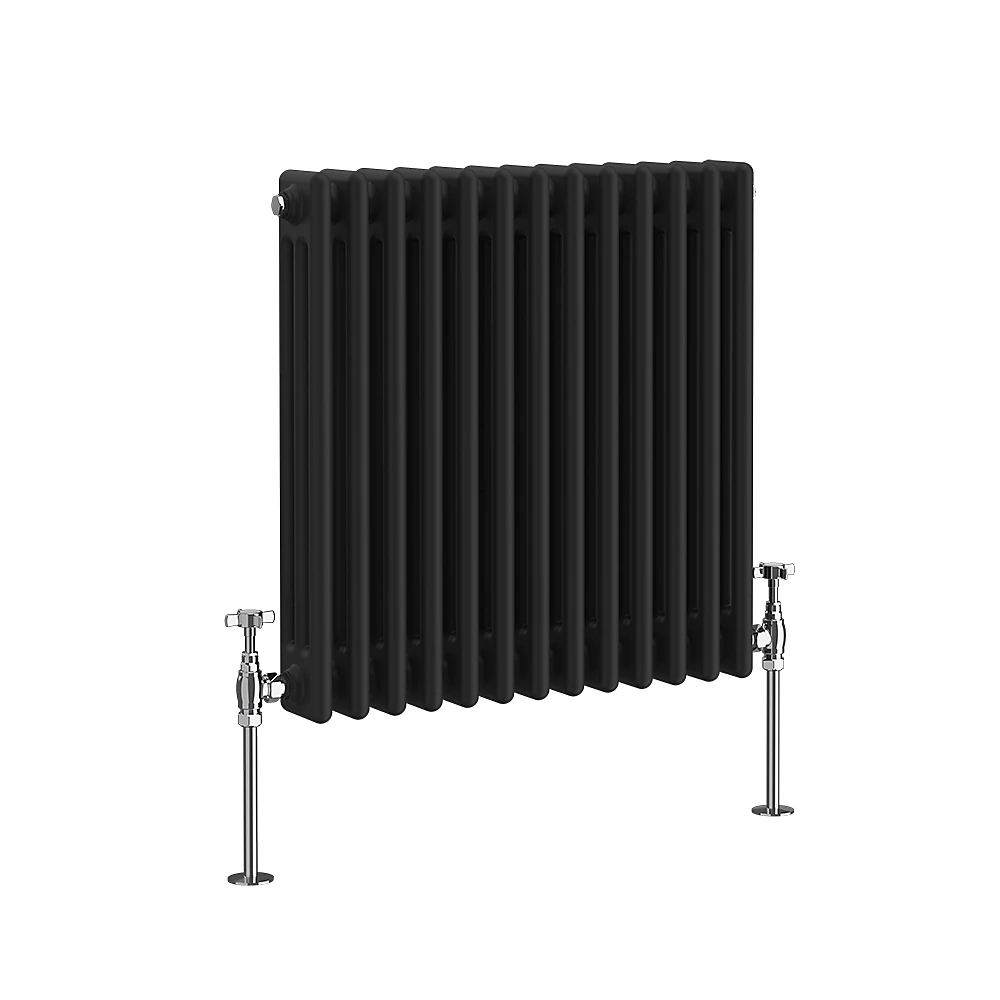
An attractive three-column radiator with a traditional design, ideal for adding period charm to a space. Available in black, it can be used with all UK heating systems

Working in the industry for over 15 years Gordon and Alan's mission is to help property owners get warmer and more comfortable with underfloor heating and proper floor screed.
Additional costs to power flushing
Alongside power flushing costs, there are a few other expenses you may incur. These are optional, but can help ensure that your heating system will be running efficiently.
- Magnetic filter installation – Installing a magnetic filter during the flush (highly recommended for better results) will add £100-£150
- System repairs – If radiators or system components are heavily corroded or blocked additional work may be required and will add to the cost
- Boiler servicing – Some companies include boiler servicing at the same time, but if not, then this will add £60-£100
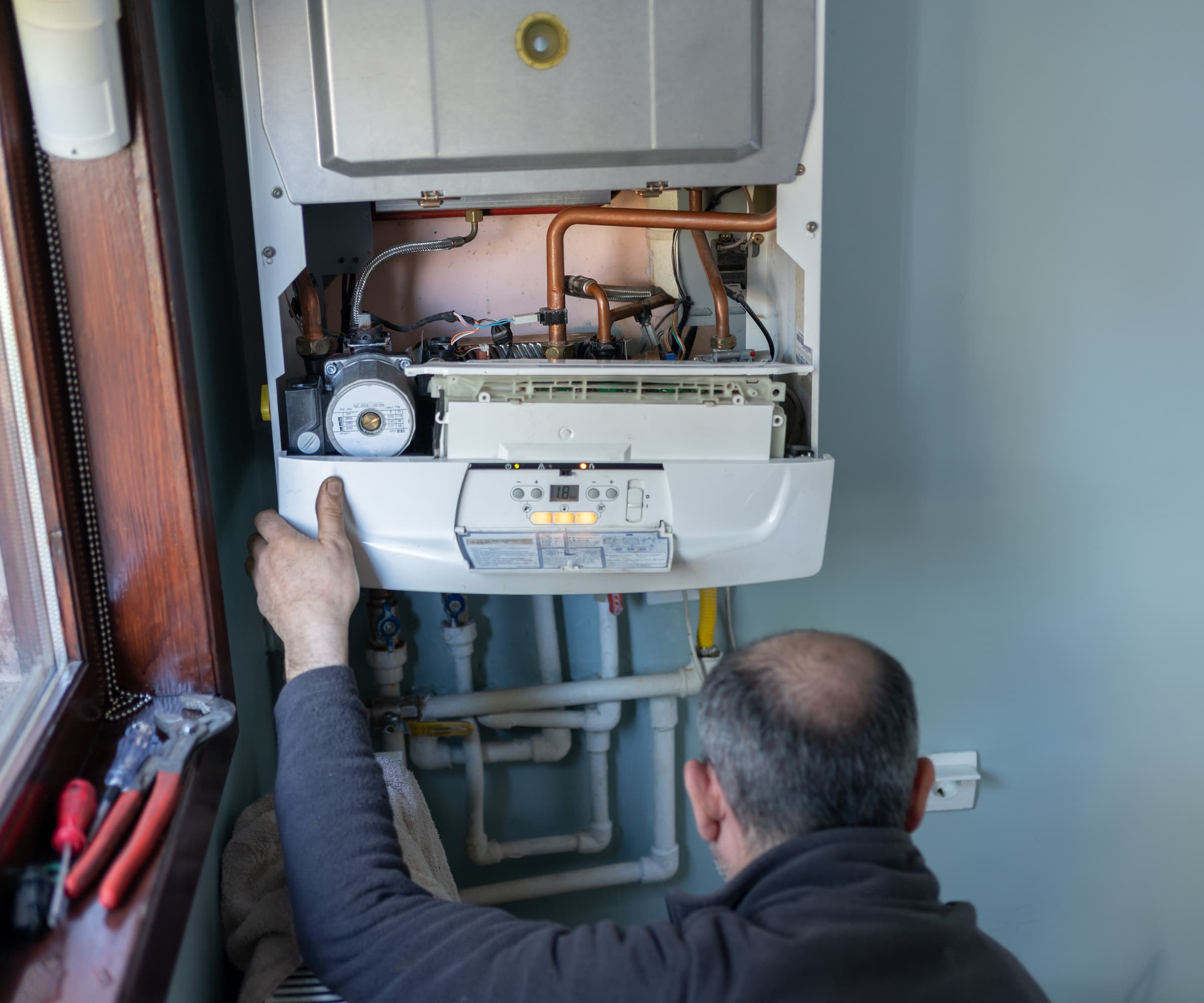
How often will I need to pay for power flushing costs?
How often you need to pay for power flushing costs, "really depends on a multitude of different factors," says Nicholas Auckland, heating and energy expert at Trade Radiators. "For example, if you have hard or soft water, as well as what your radiators are made from and the age and type of boiler you have.”
However, as a general guideline, “in my opinion, you should be power flushing your system every five to six years just to keep it in good condition,” he suggests. It can be left longer, but it might not be a wise choice.
“If you don't want to do it this often, then you can likely leave it up to nine years, but you might start experiencing some problems, especially if your boiler is old.”
Alongside a regular power flush, there are also key times when a power flush is a good choice. “If you're getting a new boiler installed, it's a good idea to power flush before it's installed. This will help protect its warranty and ensure that the new boiler is not damaged by any existing sludge and blockage that may already be in your system," says Nicholas.
Another scenario is installing new radiators. “If you give your system a power flush when you install your new radiators, you can ensure that they're performing efficiently straight away," he adds. However, “if you're having the entire system replaced, then you likely won't need to flush it as it'll already be clean,” confirms Nicholas.
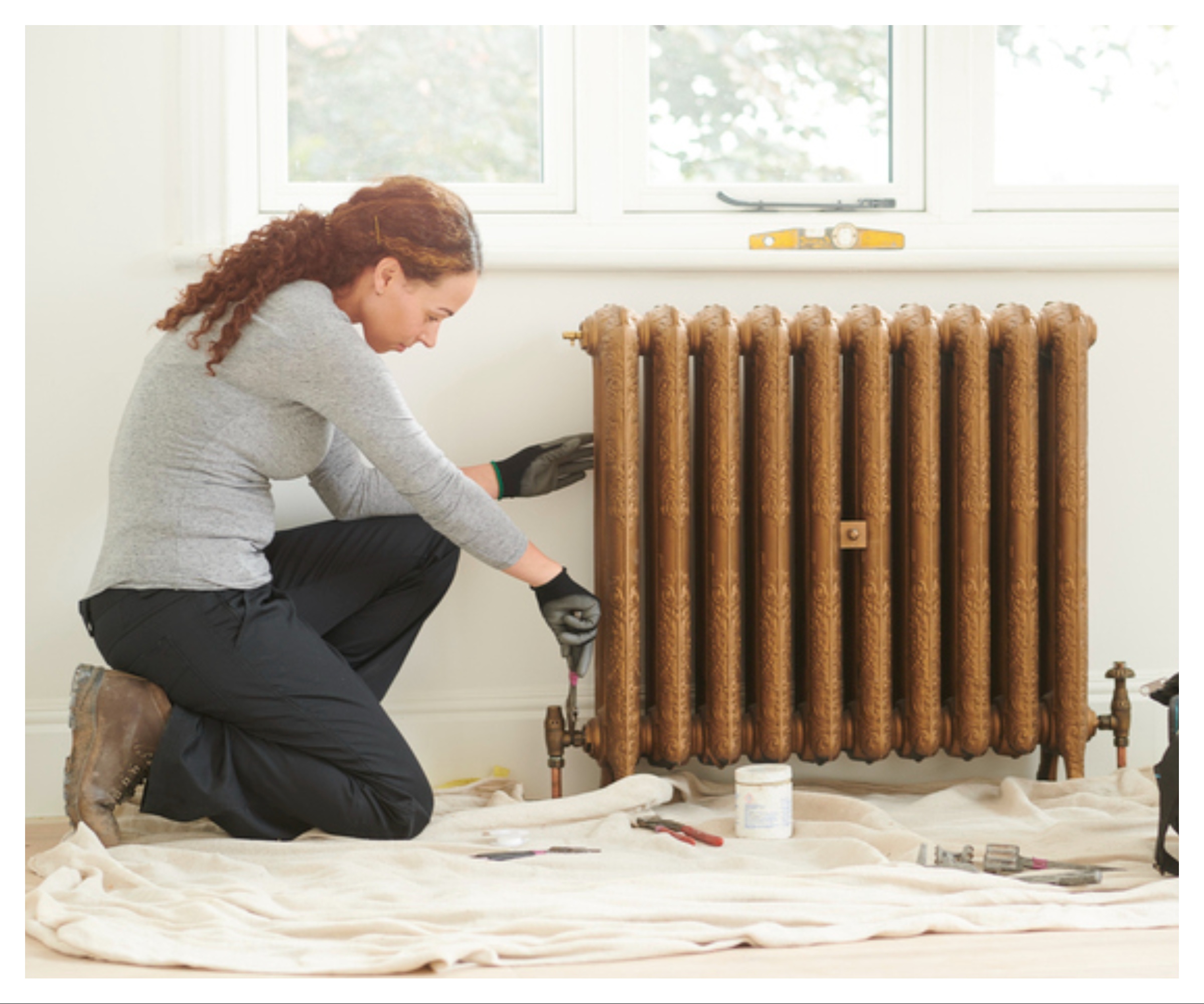
Finally, it’s a good idea to consider a power flush when moving into a new house. “If you don't know anything about the heating system, then getting a power flush is a good idea in order to make sure it's as clear as possible," he advises.

Nicholas Auckland is a heating, cooling and energy expert with over 20 years of experience in the industry. He has become a trusted leader in the industry, frequently collaborating with the media and other partners to assist with cost-of-living issues and other home-related problems.
FAQs
Is it cheaper to have fewer radiators included in a power flush?
Unfortunately you can't make power flushing cheaper by only doing a few radiators. A power flush looks to get rid of any debris from an entire heating system. This includes radiators, pipes and the boiler, so it makes no sense to leave out a radiator or two.
Plus, it could lead to issues, say the experts. “Flushing part of the system (e.g. the downstairs radiators) will result in uneven heating and future problems," warn Gordon Chalk and Alan Houghton. "If you try to power flush only part of the system you won’t get the full benefits as debris can circulate back through the unflushed areas."
If you do remove a radiator before a power flush you need to flush the radiator separately and ensure it is clean before replacing.
Are there any alternatives to power flushing?
There is only one other alternative to power flushing which is chemical flushing. This is the process of adding cleaning chemicals to a heating system and allowing them to circulate for a few days or weeks, eventually flushing the system out. The process to add the chemicals takes a lot less time than power flushing.
But, chemical flushing is not as powerful or as effective as a power flush.
“Chemical flushing is a less intensive process than power flushing and is generally cheaper,” say Gordon Chalk and Alan Houghton, "but prices rise with the number of radiators and this method is less effective for heavily blocked systems," they say.
“For a two bed house expect to pay £200-£300, while a four bed house will cost around £400. But, it's for maintenance only," they add, "not for heavy sludge or blockages.”
“Some systems may need a chemical flush followed by a power flush if the build up is severe which will also add to the cost."
Can all heating systems be power flushed?
Most heating systems including combi, system and condensing, can be power flushed. But not all. “Electric heating systems (storage heaters) can’t be power flushed as they don’t circulate water," say Gordon Chalk and Alan Houghton.
But are there any differences in the cost for different heating systems?
“Most companies charge the same for all system types but more complex systems or older properties may incur a slightly higher fee due to the extra work involved,” they explain.
Power flushing is part of keeping your heating system efficient and cost effective. Check out what you should be paying in our central heating costs per hour guide. For more tips on saving energy in the home, check out the most economical way to use central heating and how to fit thermostatic radiator valves for more efficient heating.
Steve Jenkins is a freelance content creator with over two decades of experience working in digital and print and was previously the DIY content editor for Homebuilding & Renovating.
He is a keen DIYer with over 20 years of experience in transforming and renovating the many homes he has lived in. He specialises in painting and decorating, but has a wide range of skills gleaned from working in the building trade for around 10 years and spending time at night school learning how to plaster and plumb.
He has fitted kitchens, tiled bathrooms and kitchens, laid many floors, built partition walls, plastered walls, plumbed in bathrooms, worked on loft conversions and much more. And when he's not sure how to tackle a DIY project he has a wide network of friends – including plumbers, gas engineers, tilers, carpenters, painters and decorators, electricians and builders – in the trade to call upon.

